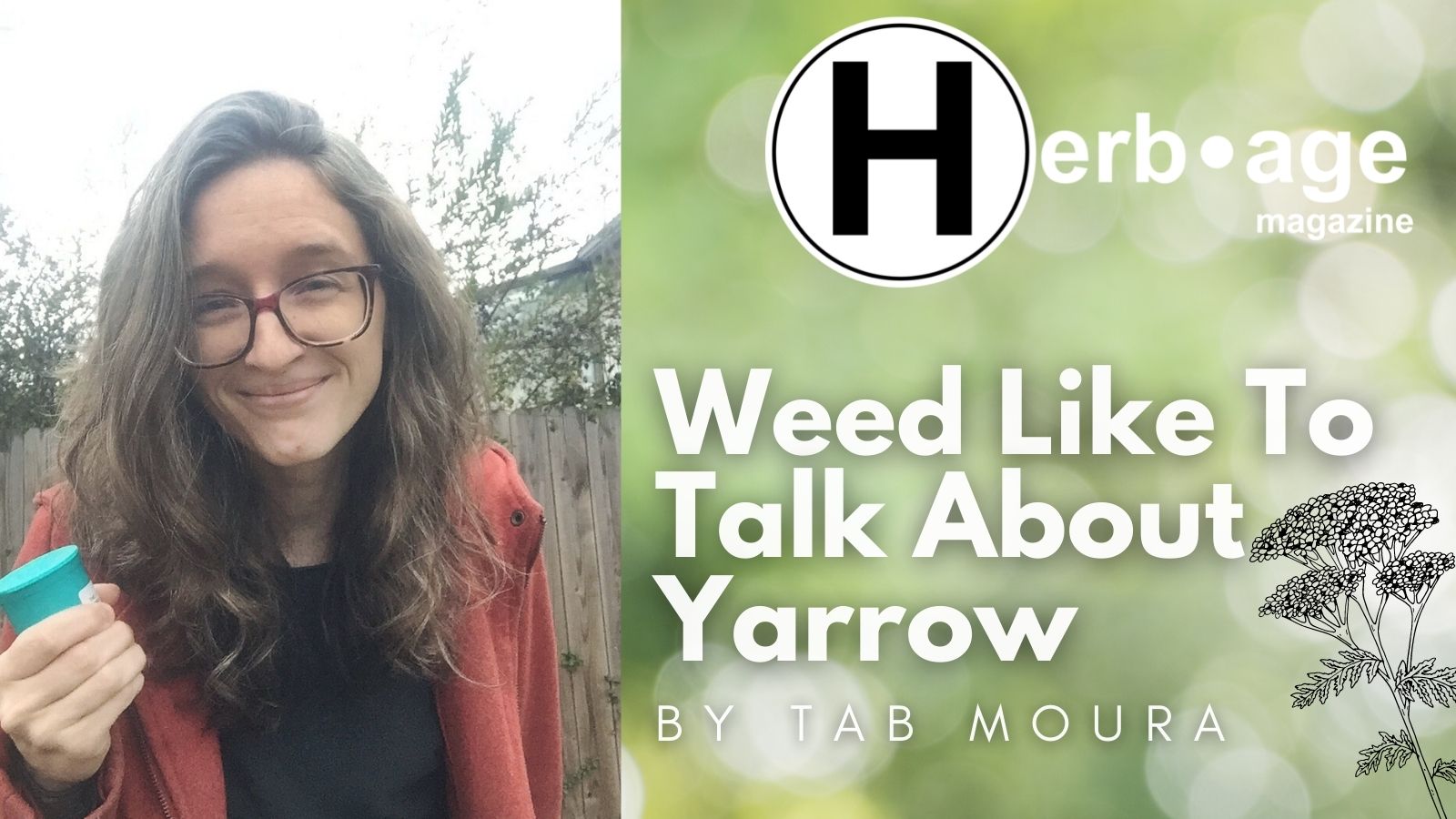By Tab Moura
Yarrow’s genus name is Achillea Milleforium, after Achilles (Greek mythology) who used Yarrow to treat his soldiers’ wounds.

If you have collected Yarrow and would like to know how to ingest it, I have a few tips. I am by no means an expert, but I rely on natural methods like these, out of necessity, and they haven’t let me down yet. Yarrow is most known for its healing properties, but first… business.
If you’re new to using herbal medicine, here’s what you need to know… never— I repeat, never eat plants that have been sprayed with chemicals. If you don’t know for sure, just pretend it’s poisonous. Secondly, Yarrow has a doppelgänger, Poison Hemlock. So again, if you don’t know for sure, don’t eat it. If you don’t want to attempt harvesting it yourself, you can find a herbalist to order it from.

Like many plants you can identify it most easily by its leaves. Yarrow and Hemlock both have white flowers, but the leaves of the Yarrow plant are more spiny than the Hemlock leaves, and the Hemlock leaves are fuller and flat. Medicinal Uses of Yarrow:
Historically, Yarrow has been used to make poultices (fresh) to heal flesh wounds in battle. In more recent observations it has reduced heavy menstrual bleeding and cramping (has been used during childbirth to stop hemorrhages), can reduce blood pressure, resolves coronary and cranial thromboses, even helps with varicose veins. Yarrow can even help with many digestive disorders. Lowers fevers, decongests, induces sweating (which is part of detoxing), and is perfect for daily ingestion while recovering from a major illness.
In case you want to make teas or tinctures, here’s where to begin. Start by cutting what you need and hanging it upside down for a time to dry. If you prefer a quicker pace, you may dry them in a food-grade dehumidifier or on low heat in the oven.
Tea – making Yarrow tea is very simple, if you have a preferred way of drinking loose leaf tea, you should be able to steep your tea once it’s dry. If you are unfamiliar with loose leaf teas, I recommend finding a tea bag option that you like. There are disposable bags you can’t fill yourself, some use an organic fabric pouch to wash afterward. Personally I prefer tea balls, which are metal and encase the herb, and it’s reusable.
Tincture – if you’re already familiar with making tinctures for cannabis, you may already have a preferred method. For those just getting started, there are a few options. You can use Glycerin (non alcoholic option), Everclear, Vodka, or any other you’re comfortable with that’s at least 80 proof. You may want to use 5oz of alcohol for every ounce of plant you harvest, and you’ll steep the plant in a dark place for 6-8 weeks. Finally, once it’s time, you will strain the contents with cheese cloth or a coffee filter and store in a dark bottle.
Topically – if you’re looking to use Yarrow on your skin, you can do this a few ways. First used on battlefields, Yarrow can be used fresh, chopped up, chewed or broken up in some way, and placed on a wound. You can also use some of your tincture to mix with a homemade lotion, like in a Beeswax, Shea Butter or Tallow mixture. I recommend practicing mixing a lotion you like before adding herbs in.
I’m enjoying working on this series, writing about common weeds and how they can support our bodies. The last year has taught me that we need to begin digging deeper into wellness, and we have to work together! Do you have a weed you’d like me to write about? Find me on Insta, @tabmoura. I’ll add your request to my list!




